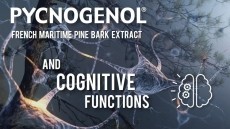Concept of biomimicry could inform nutraceutical discovery, manufacture, expert says

Biomimicry, says one of the field’s founders, Dayna Baumeister, PhD, is a way of looking at nature not for what we can extract from it, but from what we can learn from it.
“I have yet to find a category that it doesn’t apply to,” Baumeister told NutraIngredients-USA. “It’s about everything from the design of molecules up to the design of cities. It can apply to financial systems. It’s quite fascinating the way solutions from nature can inspire things in the human realm.”
Baumeister is cofounder of a Missoula, MT-based think tank called Biomimicry 3.8. Her background for this work came from early work looking at marine ecosystems and a later doctorate in organismic biology from the University of Montana. On the organization’s website, biomimicry is defined this way: “Biomimicry is learning from and then emulating natural forms, processes, and ecosystems to create more sustainable designs.”
Baumeister said the concept can be applied to the nutraceutical realm. It informs especially a mindset of trying to find ways to promote health and healing that are part of a larger picture.
Natural discovery
The process of nutraceutical ingredient discovery has long taken cues from nature. Many active ingredients, such as many polyphenols or the astaxanthin produced by algae, are the result of the underlying organisms’ interaction with their environment. Stimuli such as freezing weather, insect attack or lack of water cause plants to churn out defense chemcials which have been found to have human health benefits. Isolating these molecules, identifying their potential health benefits and describing their mode of action in the human body has been the work of the past 50 years. But Baumeister said this approach can veer into a reductionist, pharmaceutical mindset which could unneccesarily limit the view of the researcher.
“When we think about nutraceuticals or any sort of natural approach to medicine, we think about a larger ecosystem approach to how we heal internally and externally. There is a basic set of principles we are drawing from all 30 million species on the planet,” she said.
“So instead of taking a nutraceutical in isolation, a biomimetic approach would be asking the larger question of how that fits into the larger ecosystem,” Baumeister said.
Baumeister readily admitted she is not an expert in dietary supplement ingredient manufacture, so she struggled a bit when asked of how that process might change if informed more by biomemetic principles. “It’s more of an underlying philosophical approach,” she said.
But it must be recognized, too, that the field is still very young, and biomimicry as applied to the world of supplements is still in its infancy. A search on the National Institutes of Heath’s Pubmed database using ‘biomemetic’ as a search term shows many studies on materials but only a few relating to ingredients.
Personalized approach
Baumeister said another way to look at how the concept of biomimicry relates to natural health solutions arises out of her personal experience. Using the principles and the support of natural health practioners, she said she was able to heal herself after a recent cancer diagnosis without the use of radiation or chemotherapy.
“I can speak with this very personally as I was diagnozed with cancer last year and I took a biomimetic approach to my healing process. The traditional view of cancer is your body is a garden and a weed shows up. So you go in with a backhoe and you take out a huge chunk where the weed was. Then you take a blowtorch to the hole and you dump Roundup over the whole garden in case some weed seeds got out,” Baumeister said.
“A biomemetic approach is to ask why that weed is growing there in the first place. How do I amend the soil so that it’s good for the good plants in my garden and bad for the weed?”
Among the processes that Baumeister went through was detailed testing that she said indicated what supplements were right for her. Her essential fatty acid testing revealed, for example, that she needed something other than the omega-3s available on the shelf in the form of big bottles of fish oil softgels.
Baumeister admitted that not everyone can go the route she did, which involved time spent in a natural healing clinic in Switzerland. But taking certain available tests could help consumers—and the companies marketing products to them—better match the individual’s need with the products that are available.
“A lot of the challenges with the present paradigm of nutraceuticals is that we have this blanket statement that compound X, or herb Y, can help with problem Z. So what do you do? Randomly go stuff yourself with these compounds? Using a bioenergentic testing apporach we can get back to more of what we see from biomimicry, that life of itself creates the conditions conducive to life,” she said.















